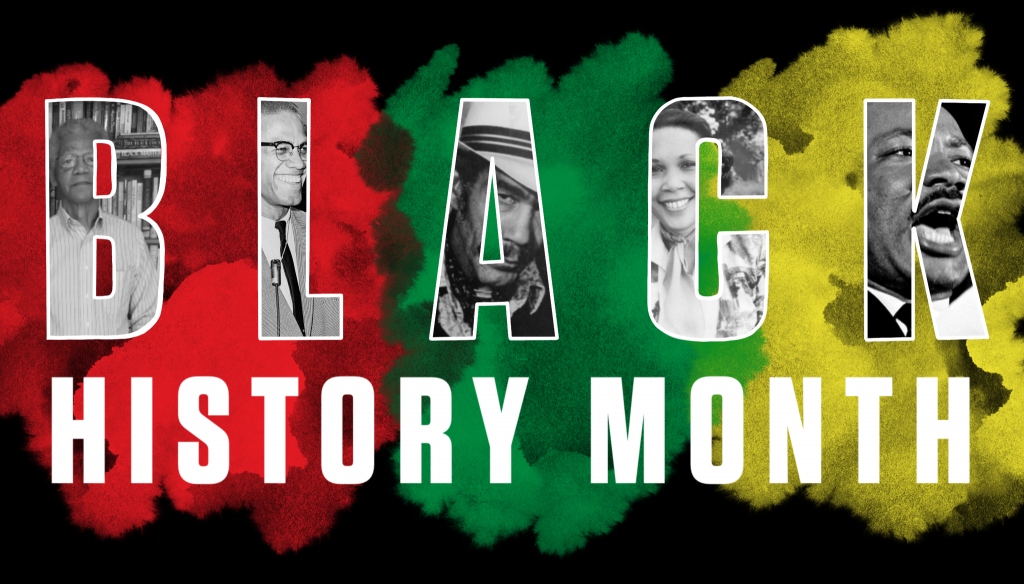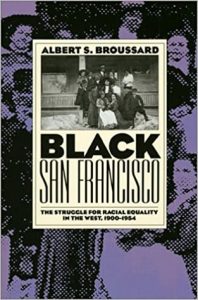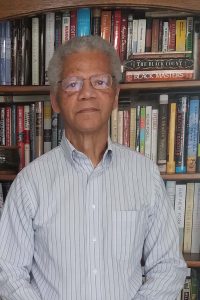Albert Broussard: Building a Better World with Black History
As a pioneer and trailblazer in Black history, it’s no surprise that history professor Albert Broussard’s work is inspiring a better future.

By Amber Francis ‘22
For many in the realm of academia and research, it is easy to get lost in the endless sea of faculty members and others itching to make their mark. The same cannot be said for one of Texas A&M University’s most beloved and distinguished professors, Albert Broussard, a true trailblazer of Black history.
Pioneering an Education in Black History
Broussard wanted to be a teacher for as long as he could remember, initially hoping to be a high school teacher. But upon attending Stanford as an undergraduate, Broussard was encouraged to attend graduate school.
“I took my first Black history course in 1970 at Stanford, when Black history was just being introduced into college curriculums, as were African-American studies programs,” he explained. “It was something I increasingly became interested in. After that, I wasn’t sure I wanted to teach high school any longer.”
Trying to continue an education in Black history was initially a difficult task, as there were very few graduate schools that taught the subject. But a breakthrough came during Broussard’s senior year at Stanford when a professor recommended Duke University, citing a young Black professor there who was training students, both Black and White, in Black and African-American history. Duke also housed a sizable community of Black graduate students, many more than Broussard has ever seen in his 36 years at Texas A&M; when he received his Ph.D. in 1977, he was among the first three Black students to complete the program.

Albert Broussard’s first published historical study was “Black San Francisco,” a book exploring race relations in the city where Broussard grew up.
“We were viewed as pioneers, essentially,” Broussard reminisced. “It’s hard to believe that in two more years, it will have been fifty years since I started my Ph.D.”
When looking back at what inspired him to study and teach Black history to begin with, Broussard cites the trajectory of the Black experience as something pivotal to his decision.
“People were forced into labor coming from Africa an ocean away and yet they adapted, using wit, creativity and humor to persevere,” he said. “And post-Civil War, even though things didn’t go as they’d hoped, they continued to make progress, however slowly that may be. To me it was just a tremendously inspiring story.”
The human drama of the Black experience, the fact that so many people over such a long period of time, have had to fight relentlessly in order to overcome adversity, and to come out with their lives and dignity intact, was something too profound and important to be ignored.
Broussard’s interest in the topic is infinitely more personal than a detached academic interest. His first published book, Black San Francisco: The Struggle for Racial Equality in the West, focused on the Black community of San Francisco in which he grew up.
Blazing a Trail at Texas A&M
After completing his education, Broussard was director of the African American studies program at Southern Methodist University before he was recruited to join the Texas A&M faculty in 1985. He and his wife Mary had a six-month-old daughter, and they thought College Station would be a good place to raise a family. The university had a reputable history department, and (mostly) supportive faculty members.
“I was able to introduce the first Black history courses taught at Texas A&M, and with the exception of a few semesters, I’ve never taken a year off since I started teaching here,” Broussard said.
Broussard had already been among the first professors to teach Black history at most of his previous universities, from the University of Northern Colorado to the University of California, Davis, so the prospect of being the first to do so at Texas A&M was far from a foreign concept.
“I think you just have to put any reservations behind you and realize that sometimes, you have to be the trailblazer,” he stated.
‘B’ is for Black
More than true to this word, Broussard is a trailblazer not just in his teaching, but in the greater realm of education, writing many of the history textbooks used in grade schools across the nation.
He began his career in textbook writing 25 years ago when his friend Donald Ritchie with the Senate Historical Office, asked him to co-author a textbook under McGraw Hill. Since then, Broussard has lost count of just how many textbooks that bear his name.

Black history is an important part of American history. Professor Albert Broussard uses his expertise to talk about the importance of Black History Month and what it means for the Black community.
“Lets just say a lot,” he said. “I don’t even count them, quite frankly.”
In 2020, after decades of authoring what he estimates to be dozens of textbooks for both middle school and high school, he made the decision to begin capitalizing “Black” in said books, a change that may seem minor or baffling to those unaware of the context behind it.
“It’s grammatically correct if you say it’s grammatically correct,” Broussard asserted. “The New York Times, The Washington Post, Wall Street Journal and other publications have all made the decision to capitalize not just the ‘B’ in the word ‘Black,’ but the ‘W’ in the word ‘White’ as well.”
Broussard calls these “areas of self-construction,” where one constructs their own identity. This self-construction is something he maintains in his interviews with both CNN and USA Today as a form of identity in which people have the inherent right to partake. With a new textbook edition set to roll out in 2023, Broussard is trying to convince his own textbook editors at McGraw Hill to follow suit and do the same in their works, a serious area of debate and discussion.
“I think it’s important because it’s what most Black people call themselves; they call themselves Black people,” he explained. “Language changes all the time. Words that weren’t in fashion five or ten years ago are viewed as perfectly legitimate today.”
A Legacy Passed from Professor to Student
Aside from his continued work as both a textbook author and esteemed Texas A&M professor, Broussard continues to be an active independent author, currently writing a history of African Americans in California from 1945 to the present, a historical study that looks at the shift of Black communities from the North and South to the West Coast. Broussard has inspired several students to pursue careers in researching and writing Black history, too.
By challenging his students and doing his best to keep them engaged in the material he so passionately teaches, Broussard has rightfully earned countless former students’ highest respect. Several of them continue to look up to him long after college and credit him with preparing them for their own successes. This is true of both of Broussard’s Pulitzer Prize-winning former students, Caleb McDaniel, who won the 2020 Pulitzer Prize in History, and Craig Flournoy, who won a Pulitzer Prize in 1986 for his work at the Dallas Morning News.
“A mentor is neither a father-figure nor a mother, but someone who takes an active interest in the learning and inquisitiveness of his students,” Broussard shared. “The truth of the matter is that we never know how our learning styles will impact a student until they tell us. It is important to mentor all your students to the degree they are willing to learn and allow themselves to be challenged instead of simply going through the motions. I learned decades ago to never underestimate the impact that you, as a professor, could potentially have on a young mind, but I do not delude myself either.”
